Two men and a dog chasing an Arctic dream in a lifeboat
- Published
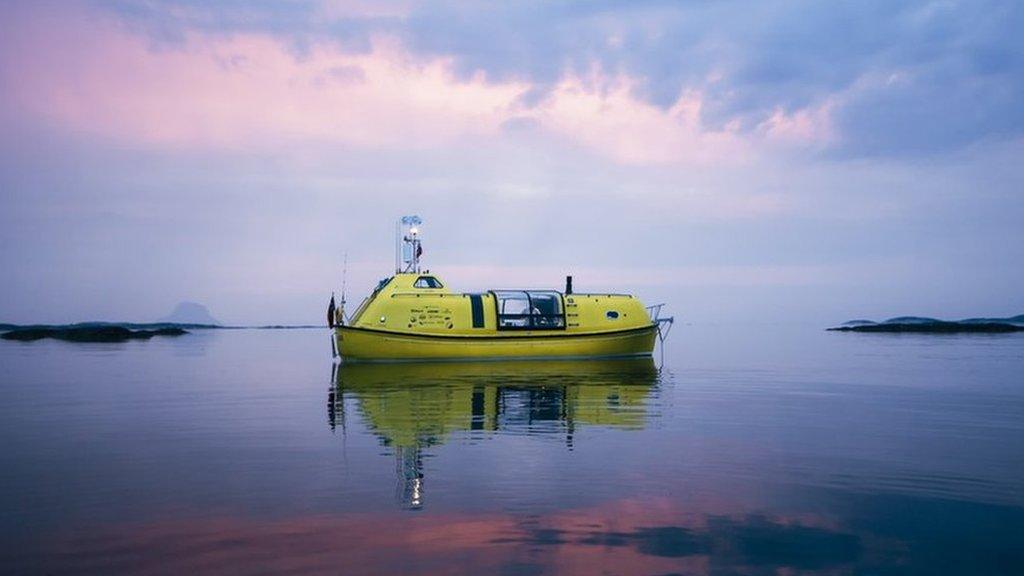
In February 2018 two young architects bought a retired Scottish lifeboat and converted it into a self-sufficient expedition home. After a 5,000km (3,100 miles) journey to the Arctic Circle with a dog named Shackleton, their adventure continues.
For 20 years it was known as Clansman Lifeboat No. 1. It was 11m (36ft) of orange fibreglass, capable of carrying 100 people should disaster strike the CalMac ferry MV Clansman on its journeys off Scotland's west coast.
The lifeboat was painstakingly maintained and tested every month but never used in earnest. And two years ago it was decommissioned in favour of new inflatable alternatives.
Lifeboat No. 1 was put up for auction and the winning bid, of £7,000, came from two architects from England.
A tranquil retirement for the old lifeboat was not what they had in mind.
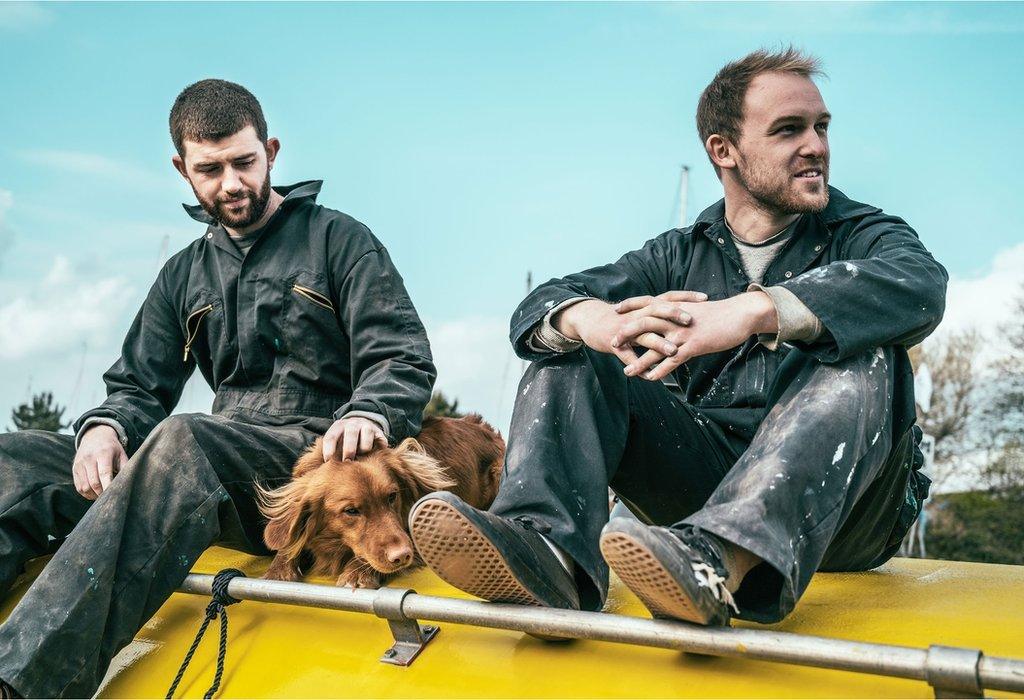
Guylee, left, and David decided to do the conversion work themselves
After seven years of architectural training, friends Guylee Simmonds, 29, from Newhaven in East Sussex, and David Schnabel, 28, from Surrey, weren't quite ready to settle down to the nine-to-five life.
They knew each other from university but were now working in separate countries as they completed their professional qualifications. They planned to celebrate with a hiking trip in Norway.
Then Guylee spotted an old escape lifeboat which had been converted to a houseboat on a river. Soon he was hitting the internet, researching. The germ of an idea began to form; why not adapt one of these rugged boats and sail to Norway instead?
"I come from a family of seafarers," says Guylee. "It seemed to me quite natural to transform it into a boat project. Norway has an incredible coast and a boat is a great way to do it."
The next challenge was to persuade David. "He's from a more land-dwelling background," says Guylee.
David was soon on board with the idea, and when the pair became the new owners of Lifeboat No.1 they quit their jobs and threw themselves into the biggest design challenge of their careers.
"As architects we are always designing for other people, but now we were doing it for ourselves," Guylee says.
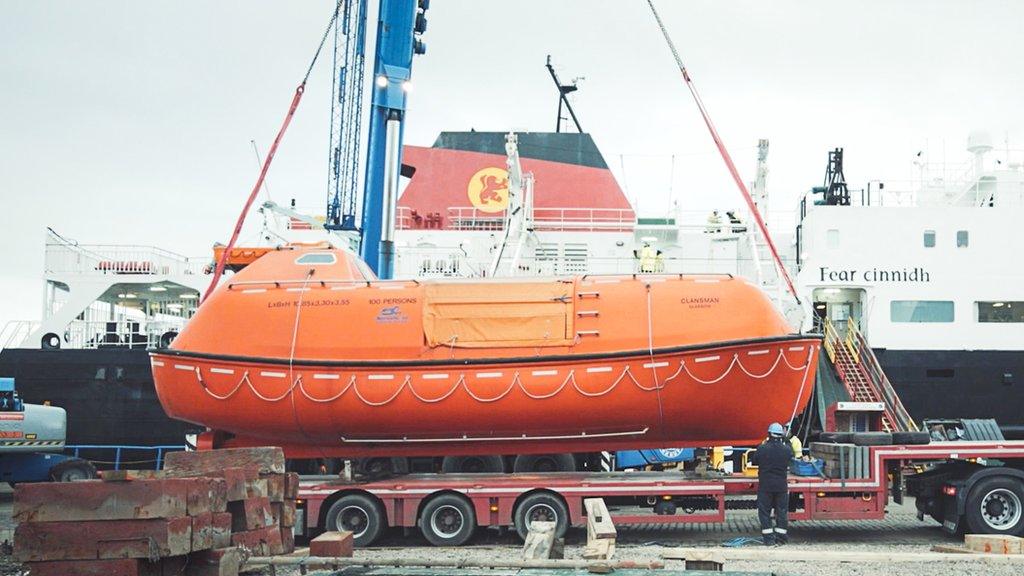
Clansman Lifeboat No.1 leaves the service of CalMac ferries in Greenock
Lifeboat No.1's next journey was on the back of a low loader from Greenock beside the River Clyde to a marine yard in Port of Newhaven, nearly 500 miles (805km) away in East Sussex.
The new owners decided to do the conversion work themselves, including plumbing, electrics and an engine rebuild - partly to save money but also knowing it would give them invaluable knowledge of the boat if anything went wrong and needed fixing.
The lifeboat still had its original diesel engine but a complete refit was required. Funding came from sponsors and selling "shares" which could be traded for a short stay on board.
The existing layout was stripped out - benches and bilge lockers containing nearly 1,000 emergency water rations, packaged in single gulp portions.
A tour around Stødig
Their design featured two double cabins, bunk beds for guests, a sitting area, chart table, kitchen, composting toilet and a shower. A wood-burning stove would provide some Scandinavian hygge on those chilly arctic nights.
Small wind turbines were fitted and the roof was covered with solar panels capable of delivering 900W of off-grid power.
The original tarpaulin was replaced with curved windows while the rear superstructure of the boat was cut away, making way for a new plywood and fibreglass cockpit.
This gave them a small outside space for storage and, just as importantly, a place to sit for a barbecue or a beer on a sunny evening.
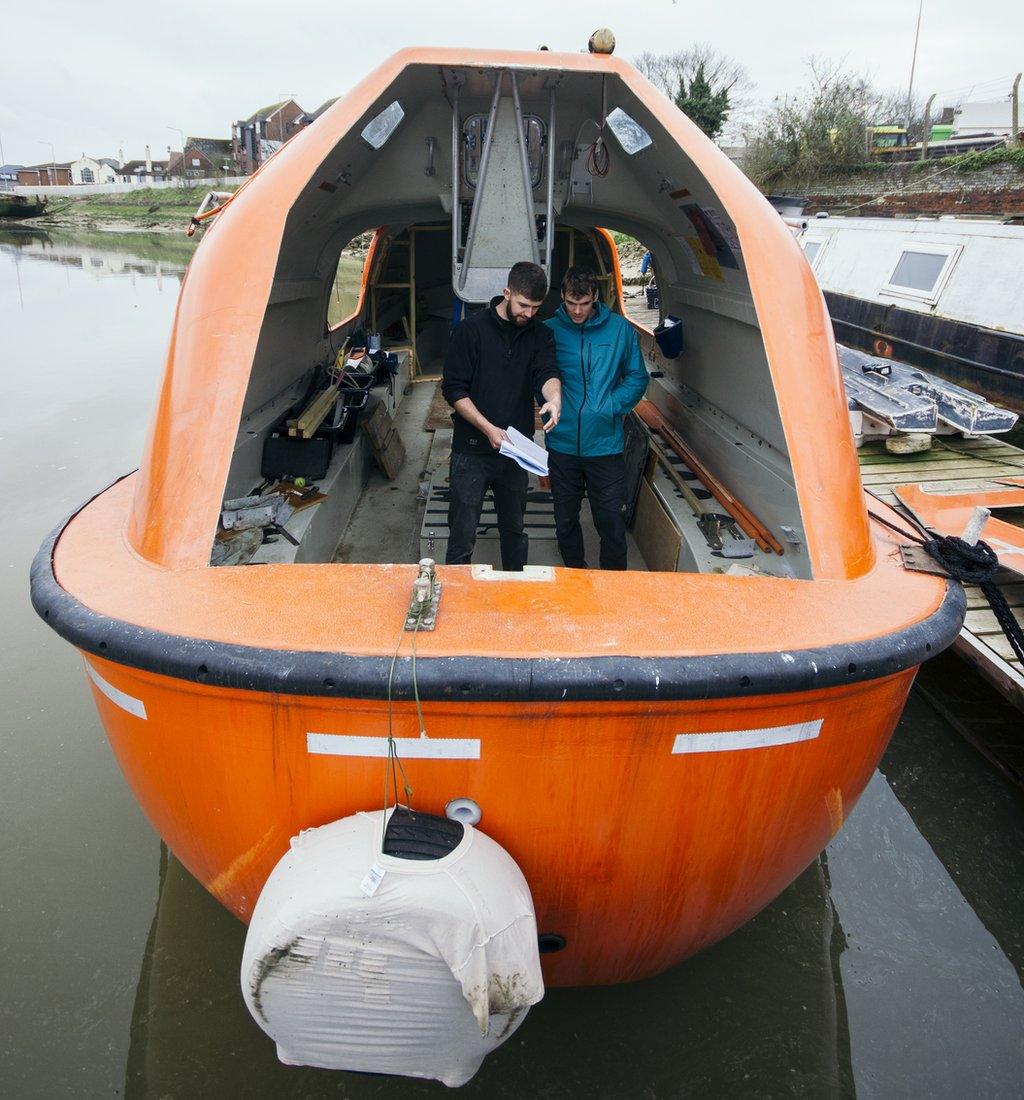
Hacking a section off their newly-acquired boat to form a cockpit took nerves of steel but Will, a visiting friend from Canada, gave them some moral support

It took them more than a year to complete the work - by now the lifeboat had a new name. Stødig - Norwegian for steadfast.
"The lifeboat was originally manufactured in Norway - and that's where we were heading so a Norwegian name seemed appropriate," said Guylee.
"Stødig means steady and reliable and that was how we saw this, an incredibly safe home - but it was also a bit tongue-in-cheek. These boats can roll about a bit in rough seas so in another sense it's anything but steady."
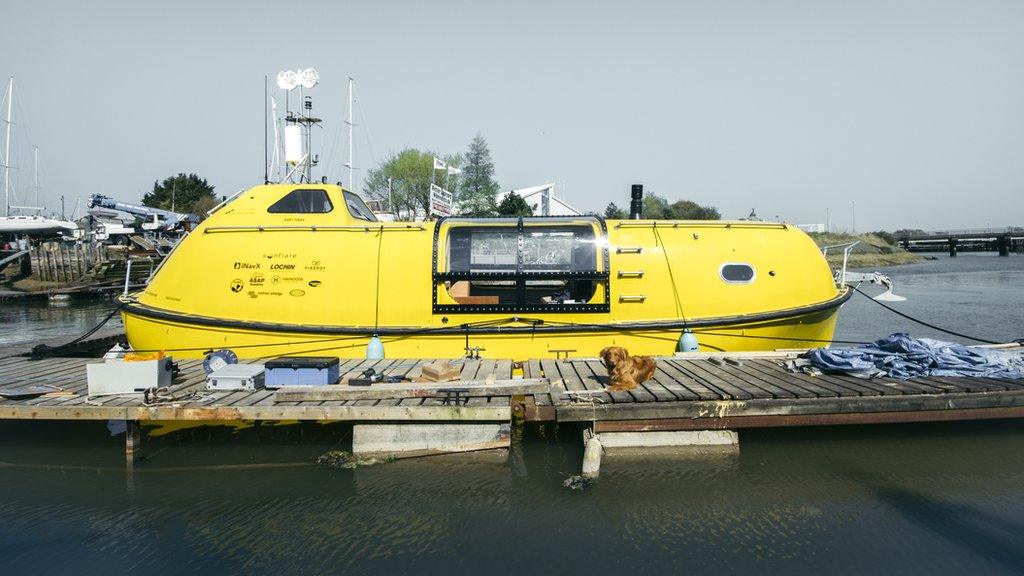
After more than a year of work Stødig was ready for the voyage
On a fine spring day last May, David, Guylee and his Nova Scotia Duck Tolling Retriever, Shackleton, finally set sail from Newhaven, bound for Dover.
The interior still wasn't finished and the last-minute cramming aboard of provisions, skis, fishing rods, kite-surfing gear and other equipment had left the boat unevenly weighted at first.
"It was a bit chaotic," says Guylee. "We hadn't had much time for sea trials. So it was a mixed feeling of anxiety and excitement. But there's not any better feeling than going out on the open sea for the first time in your own boat."
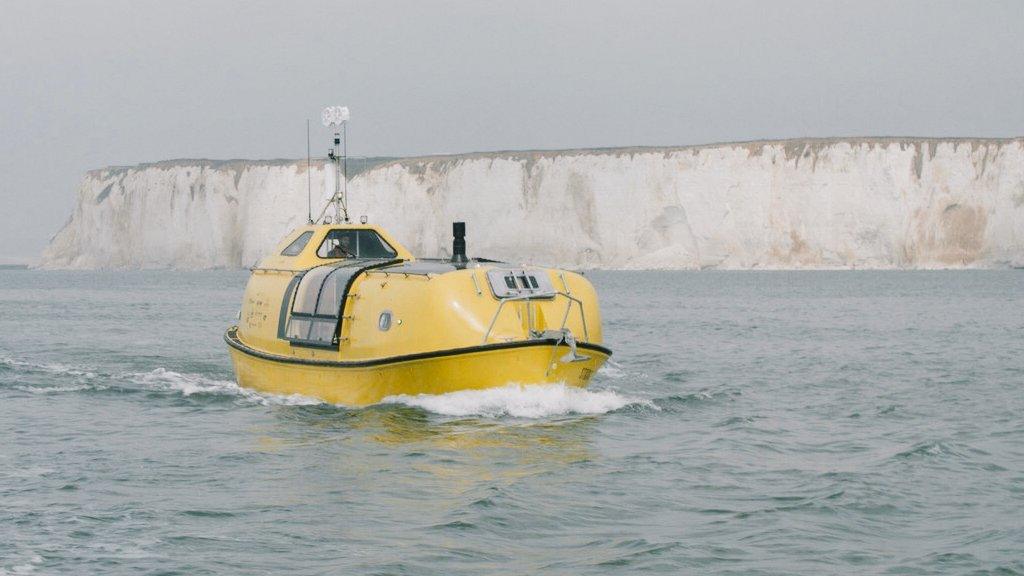
Leaving behind the chalk cliffs of East Sussex as they head for the English Channel
From Dover they crossed the world's busiest shipping lane at the start of a 5,000km (3,100 miles) journey taking in eight different countries.
Arriving in France, they skirted the Belgian and Dutch coast before passing through Germany's Kiel Canal into the Baltic, then made their way up the Danish and Swedish coasts.
Engine problems necessitated a fortnight's stop in Sweden but at the start of July they were ready for Norway.

Shackleton has adapted well to his new life as a sea dog
As they crossed The Skagerrak, the strait on Norway's south east coast, they encountered their most challenging conditions as Stødig lurched through 4m (13ft) swells.
"It's a heavy boat so it tends to push through the waves but they were breaking over the top of us," Guylee said. "Imagine being on a rollercoaster and having no idea when you can get off again."
The ordeal lasted half a day and when it ended they were finally in Norway. Now the trip they'd planned for really started - exploring 3,000km (1,864 miles) of fjords and islands.
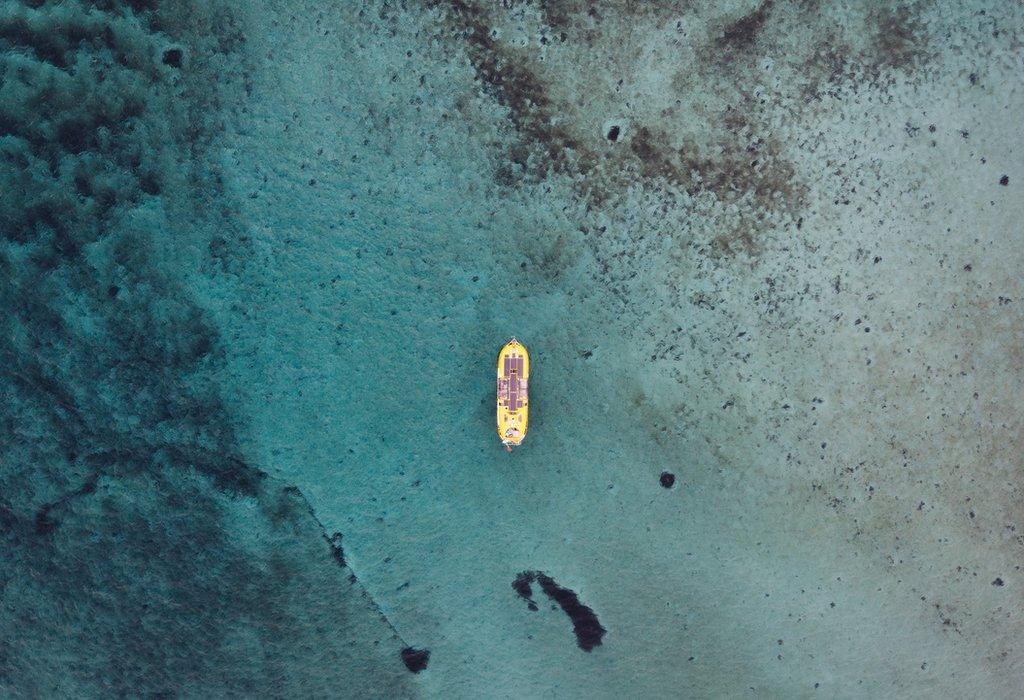
"Easy to forget we're in the Arctic, not the Caribbean" they posted on Facebook
Their journey north loosely followed the old Hurtigruten ferry route which has been transporting Norwegians up and down the jagged coast since 1893.
An early stop was Stødig's birthplace - the Norsafe factory in Arendal where the lifeboat was manufactured 23 years earlier. A guided tour of the factory was reciprocated with an inspection of Stødig for the bemused Norwegians.
The voyage could, in theory, have been completed in a fortnight but they took four months, exploring uninhabited coves, fishing, climbing, and visiting a new town every four days or so.
As architects they could bring in some income doing freelance work on their laptops. Friends and sponsors joined them along the route for short visits.
"What's important for me is the freedom,' said Guylee. "The shift from routine, not looking at the time."
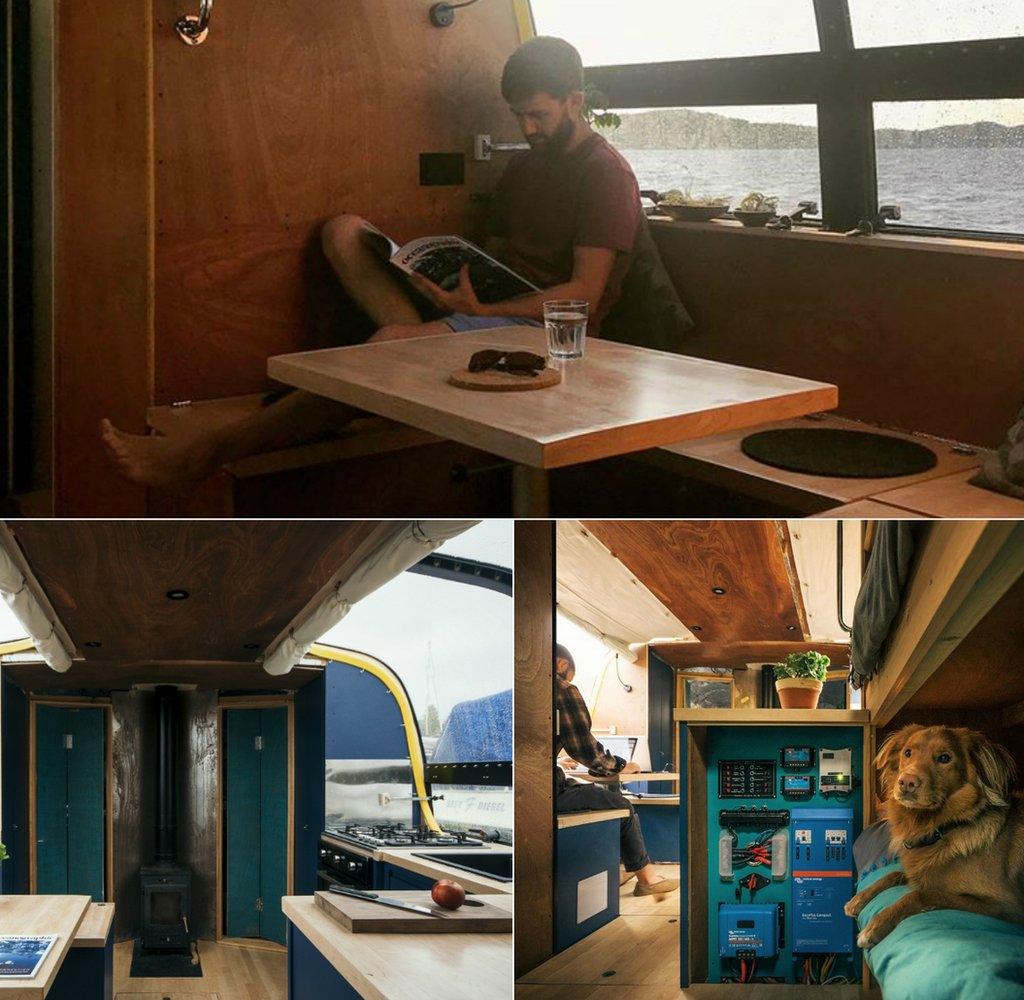
The design challenge was to create a comfortable self-sufficient floating home
As they journeyed north, the boat's shallow draught - just 80cm (32in) - meant they could reach places inaccessible even to yachts.
"We were led by fishermen we chatted to, or if we saw something interesting on a chart or a satellite photo," says Guylee.
"We enjoyed making decisions on where to go, day by day. That's the freedom of a boat. But it was also good to have a final destination to aim for."
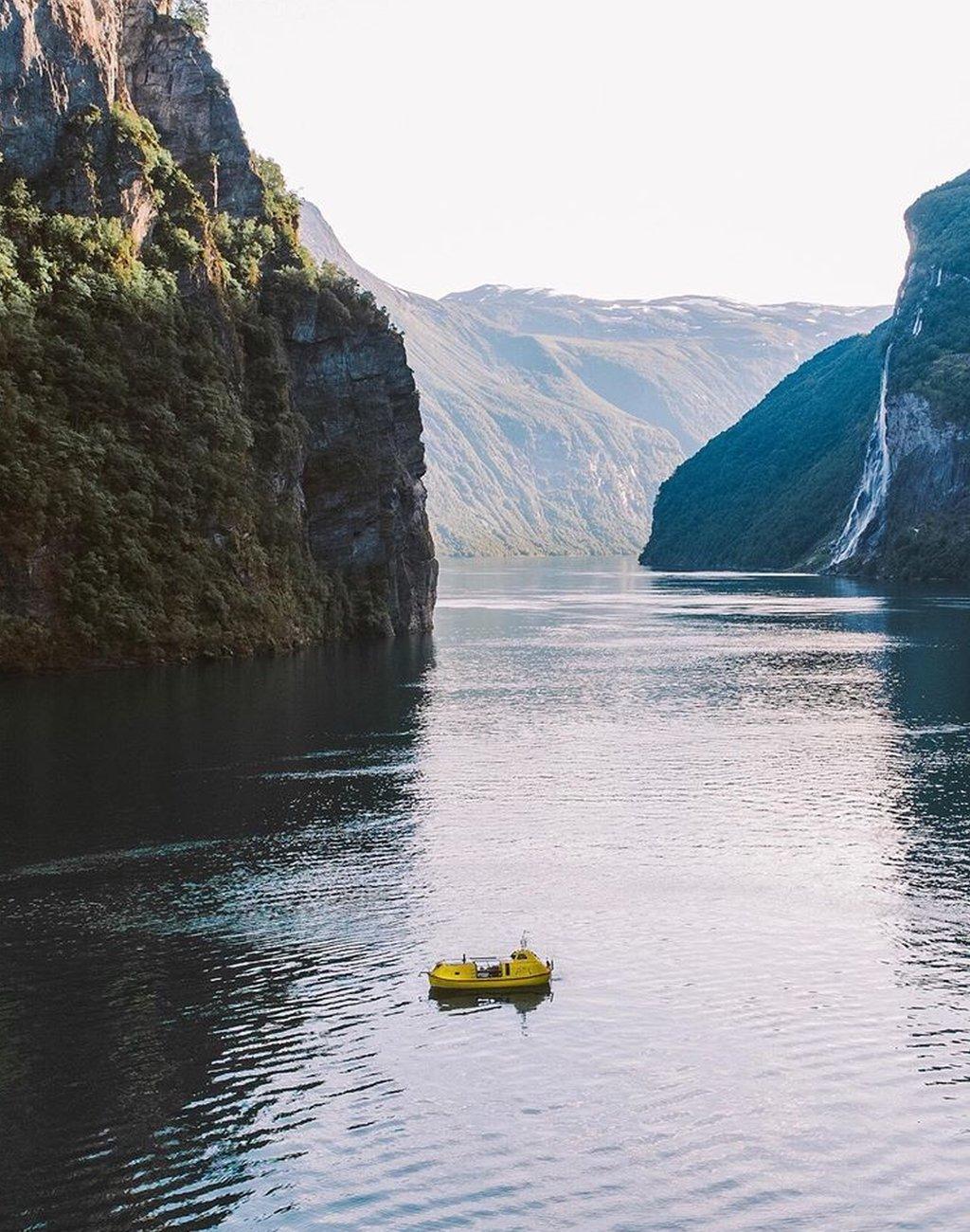
A July heatwave made the journey through Geirangerfjord all the more enjoyable

One of the highpoints was Geirangerfjord, one of Norway's most famous fjords, which they reached in July. "It's one of the most breathtaking places," Guylee says.
"Crystal clear water surrounded by near vertical cliffs rising up on either side. We had a blistering heatwave which meant we could really enjoy swimming to the glacial waterfalls."
In September, on day 124 of the voyage, they finally arrived in Tromsø - 70 degrees north, the largest city in the Arctic Circle.
The winter was spent moored in Tromsø's Skattøra marina. Guylee found a job with local firm of architects while David was able to continue his freelance work.
When not working, the pair indulged themselves with a shared love of skiing and climbing.
Kayaking expeditions have involved some up-close encounters with orca and humpback whales. Shackleton has wandered out onto ice floes and met some curious reindeer on his walks.

The Northern Lights over Tromsø on Boxing Day
On Boxing Day the skies above Tromsø shimmered with a jaw-dropping display of the aurora borealis, the Northern Lights.
February brought snow storms that saw 2in (5cm) thick slabs of ice form on the sides of the boat but "over-engineering" made the boat a cosy home in even the harshest conditions.
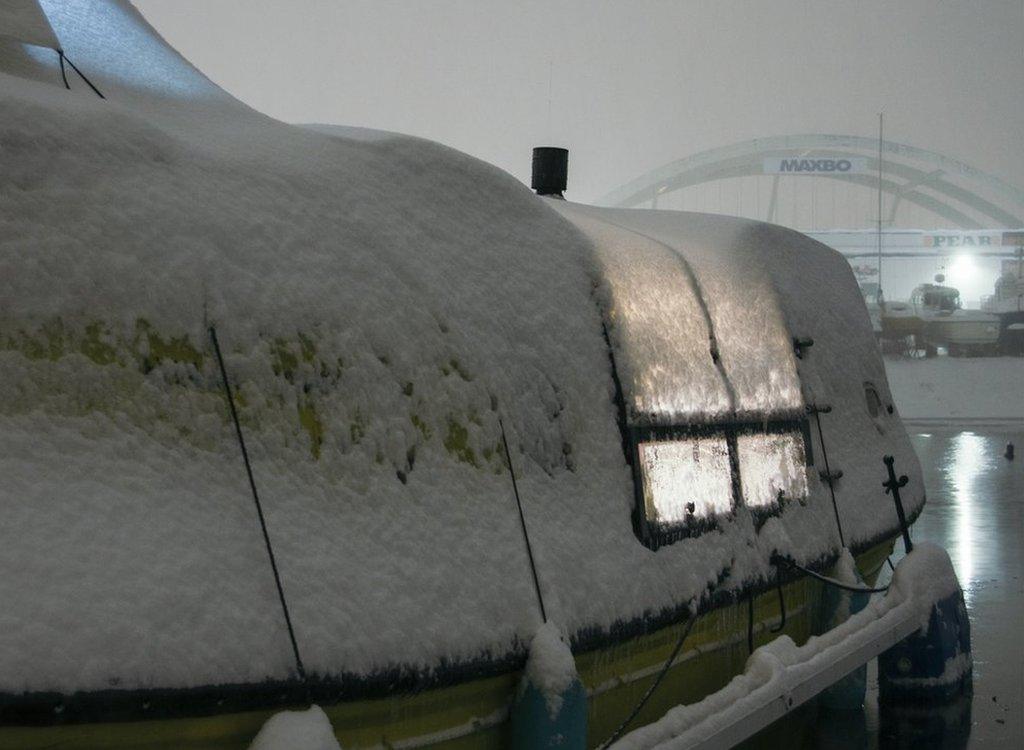
The harsh winter was spent in Tromsø's Skattøra marina
The plan for the summer was to set sail again - exploring even further north - but in March the coronavirus pandemic created an unexpected complication.
David's work required him to fly home to the UK for short trips, and during once such visit, Norway shut its ports and airports to foreign nationals.
For the past two months Guylee and Shackleton have been waiting patiently for David to rejoin them so they can resume the adventure.
"We are good at isolating ourselves - but it's different when it's voluntary," says Guylee.
He sees them keeping Stødig for the rest of the year at least - but when the time comes the boat will be sold. Profits will go to the charity Hope Health Action which has projects in Haiti.
"It's far too capable a boat to be stuck in a marina," he says. "My hope is that the new owner will take it on a new adventure."
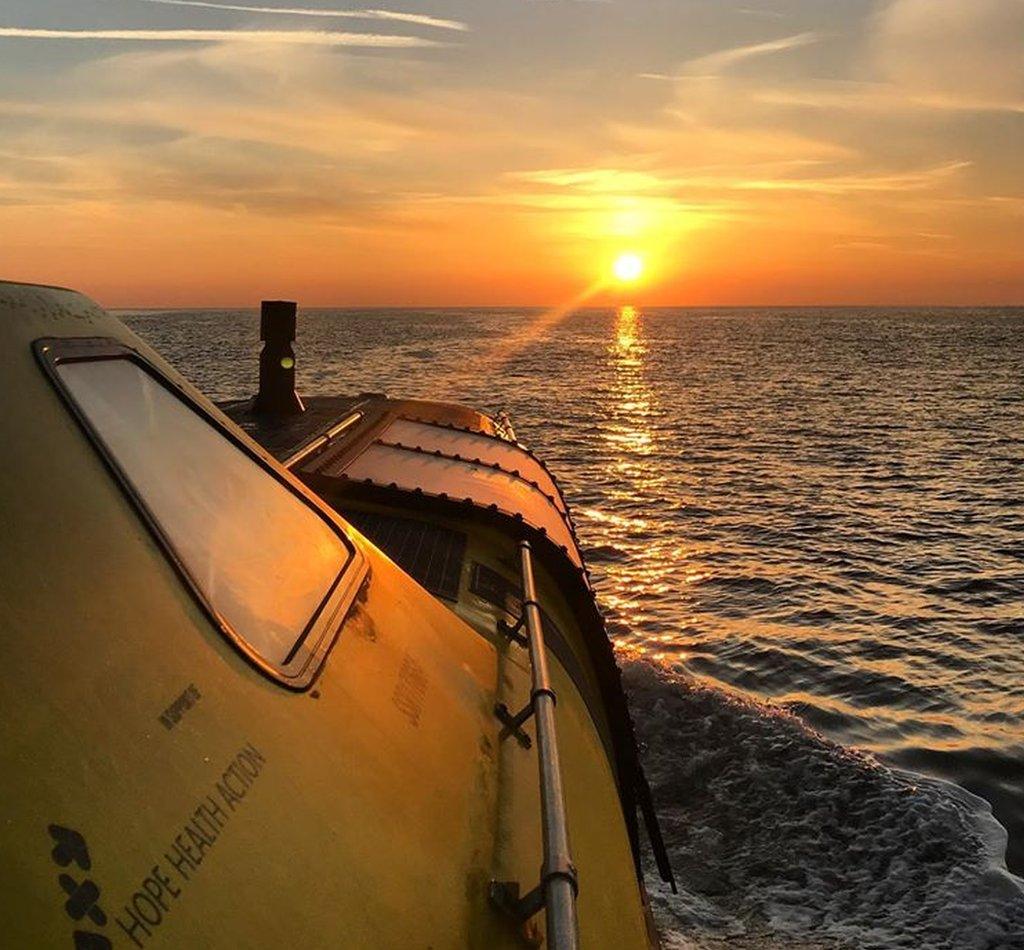
Guylee and David hope Stødig's future owners will set sail on a new adventure
Stødig, a short film by production company be Copa Cymru & Febril Film, documenting the expedition is due for release this summer.
All pictures are subject to copyright.